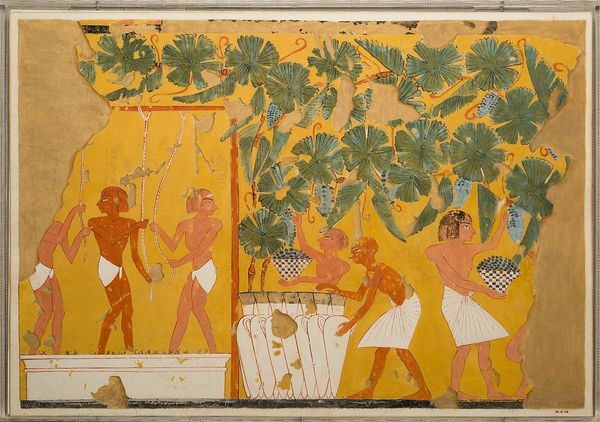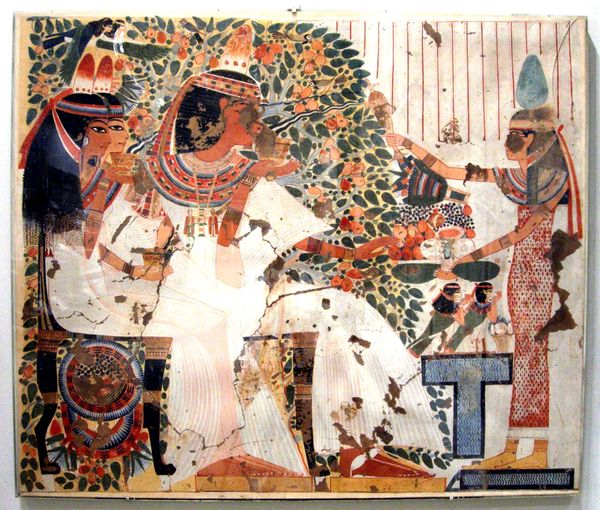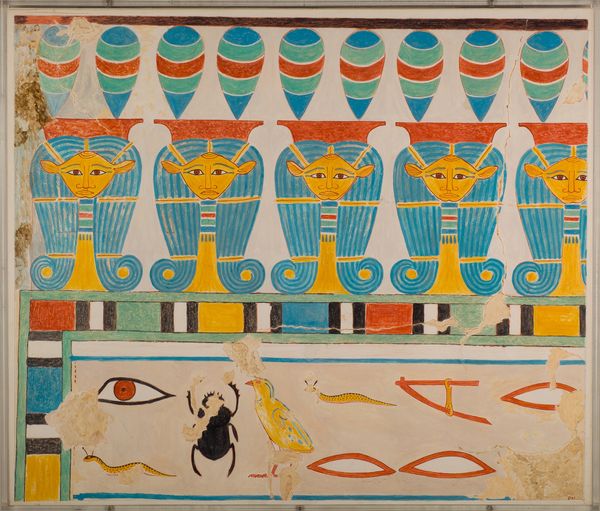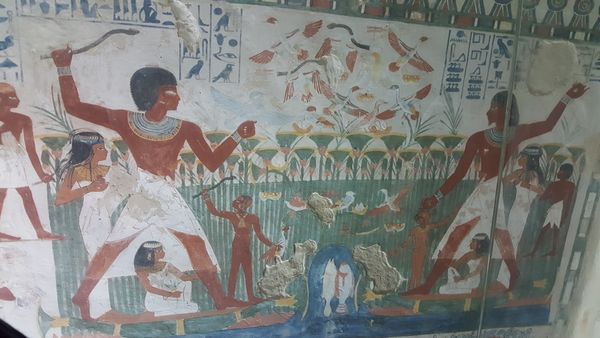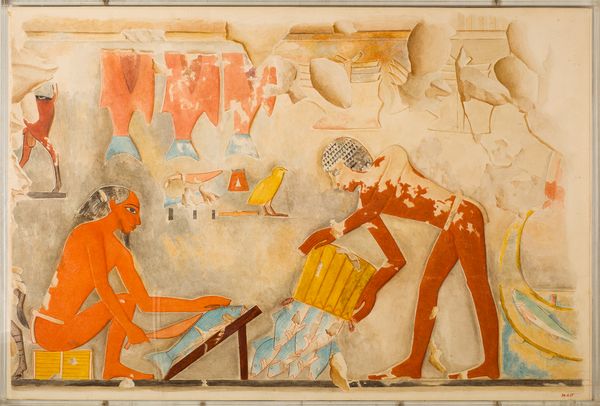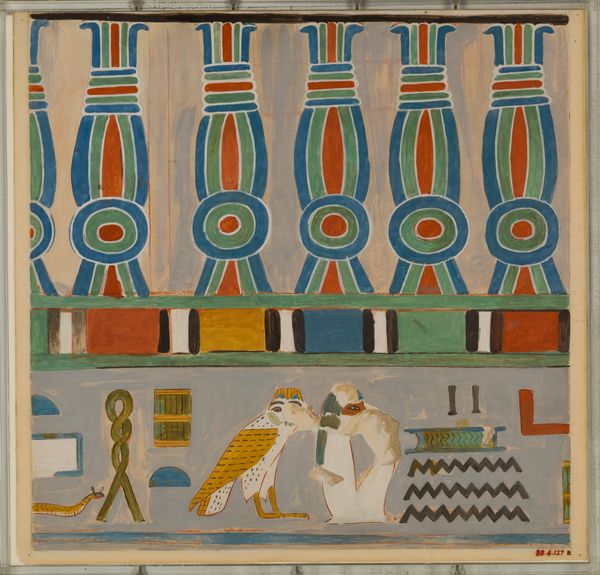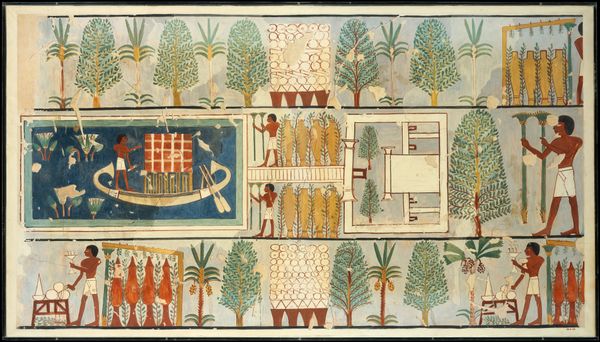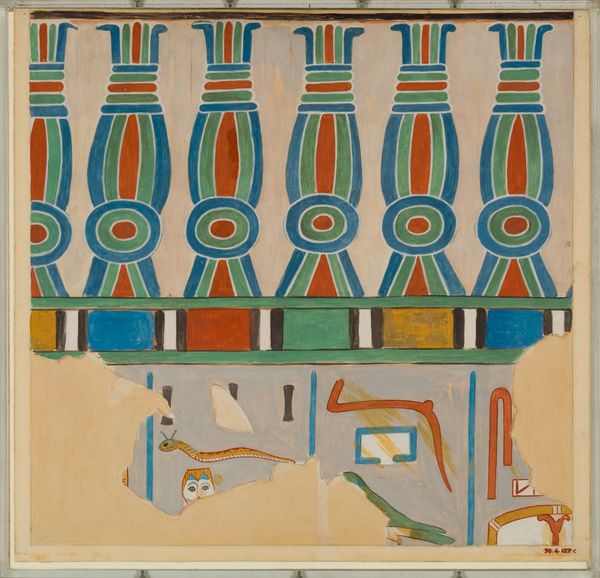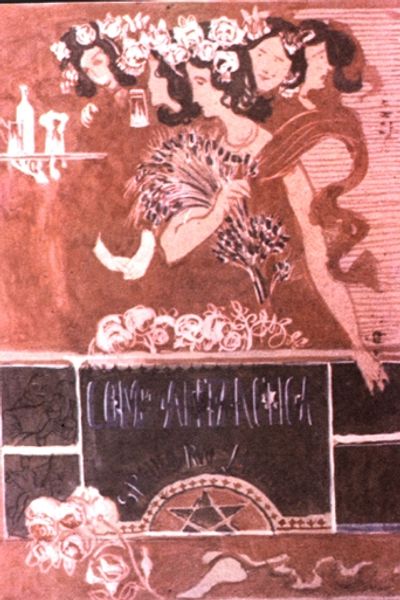
fresco, mural
#
portrait
#
garden
#
narrative-art
#
landscape
#
ancient-egyptian-art
#
figuration
#
mural art
#
fresco
#
egypt
#
ancient-mediterranean
#
line
#
genre-painting
#
history-painting
#
mural
#
mural
Dimensions: facsimile: h. 35 cm (13 3/4 in); w. 48 cm (18 7/8 in) scale 1:1 framed: h. 38.7 cm (15 1/4 in); w. 51.4 cm (20 1/4 in)
Copyright: Public Domain
Curator: Look at this stunning fresco titled "Garden Scene, Tomb of Ipuy." It’s from around 1295 BC, during the late 18th Dynasty of Egypt. Norman de Garis Davies, the artist who reproduced the fresco, really captured the essence of this garden scene originally painted within Ipuy's tomb. Editor: My first impression is one of serenity mixed with industriousness. There's a boy actively watering plants and even a dog enjoying the space. It feels very human, very grounded. Curator: It’s interesting you say that, because tomb paintings often served a symbolic purpose: to ensure the deceased enjoyed the afterlife. Does anything strike you as particularly symbolic? Editor: The boy watering the plants... Water is life in ancient Egypt, so I think that’s symbolic of nurturing life for Ipuy in the afterlife. I notice lotus blossoms, too. Those are closely associated with rebirth. Curator: Exactly. Beyond its afterlife symbolism, it also provides insight into Egyptian life and their deep reverence for nature. The gardens held economic and cultural significance. They weren't just pretty; they were productive spaces. We need to also think about this garden being constructed for, and depicted by, a very elite patron. This work is less an illustration of real labor and more about class. Editor: I can see that, knowing it was created in the elite setting of a tomb. I look at the plants themselves. They seem to mirror life in its phases—the buds as potential, the full blooms as vibrant existence. Also, there are sharp lines surrounding the architecture versus the fluid natural forms. Perhaps the image draws a dichotomy between built spaces versus living ones? Curator: Fascinating, you are linking that contrast to both Egyptian's social world, with class boundaries shaping people’s access to the built environment, and to broader Egyptian values that connect natural cycles of growth with the immortal. Editor: This small patch holds a very big, intricate perspective on life, death and culture. Curator: Precisely, and looking at this painting in a museum reminds us that the act of seeing art involves many layers of mediation – in this case, Norman de Garis Davies’ careful tracing of ancient artwork and our own positions as viewers of this museum copy. Editor: Right, seeing Davies' vision of the ancient world prompts deep reflections on human symbolism, timeless imagery, and, in a way, universal ideas that resonate even millennia later.
Comments
No comments
Be the first to comment and join the conversation on the ultimate creative platform.
